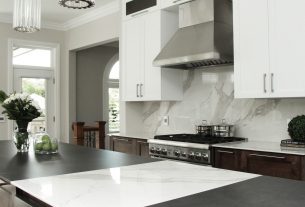When choosing upholstery materials for furniture, there are several key factors to consider.
Durability and Maintenance:
Consider the durability of the material, mainly if the furniture will be used frequently or in high-traffic areas. Look for materials that can withstand wear and tear, such as heavy-duty fabrics or leather. Think about the level of maintenance required for the upholstery material. Some materials may be more stain-resistant and easy to clean than others. Consider your lifestyle and the amount of time you are willing to invest in maintenance.
Comfort:
Comfort is crucial when selecting upholstery materials. Test the material to ensure it feels pleasant to the touch and offers the desired level of comfort. Different materials have varying textures and softness, so choose one that suits your preferences.
Style and Aesthetics:
Consider the overall style and aesthetic you want to achieve in your space. Upholstery materials come in a wide range of colors, patterns, and textures. Select a material that complements the existing decor and adds to the desired ambiance.
Climate:
Take into account the climate of your region. For humid or hot areas, breathable fabrics like cotton or linen can be more comfortable. Materials with insulating properties, such as wool, might be preferable in colder regions.
How can upholstery contribute to the overall aesthetic appeal of a space?
Upholstery plays a significant role in enhancing the overall aesthetic appeal of a space. Here’s how it can contribute to the aesthetics:
Color and Pattern: Upholstery materials come in a wide range of colors and patterns, allowing you to introduce different hues and designs into your space. You can choose upholstery that complements or contrasts the existing color scheme to create visual interest and focal points. Bold or vibrant colors can add a pop of excitement, while subtle or neutral tones can create a calming or sophisticated atmosphere.
Texture and Material: The texture of upholstery materials can add depth and tactile appeal to a space. Materials such as velvet, leather, or textured fabrics create visual interest and can make the furniture appear more inviting. The choice of materials, such as silk, linen, or faux fur, can also contribute to the overall theme or style of the room, whether it’s a classic, contemporary, or rustic aesthetic.
Visual Cohesion: Upholstery can tie together the various elements in a space, creating visual cohesion. By coordinating the upholstery with other design elements like curtains, rugs, or artwork, you can establish a harmonious and balanced look. Upholstered furniture can serve as a unifying element, bridging different colors and textures within a room.
How can upholstery play a role in enhancing the durability and lifespan of furniture?
Upholstery plays a crucial role in enhancing the durability and lifespan of furniture in several ways:
Protection: Upholstery acts as a protective layer for the underlying structure of furniture. It helps shield the frame, padding, and other components from direct wear and tear, spills, stains, and sun damage. By providing a barrier, upholstery can extend the life of the furniture by preventing damage to the internal components.
Strength and Reinforcement: Upholstery materials can add strength and reinforcement to the furniture. Fabrics and leathers with durable construction and high-quality stitching can contribute to the overall sturdiness of the piece. Well-made upholstery materials can withstand regular use and maintain their structural integrity for an extended period.
Resistance to Wear and Tear: Choosing upholstery materials that are specifically designed to withstand wear and tear can significantly enhance the durability of the furniture. Look for materials with high rub counts or Martindale ratings, which indicate their resistance to abrasion. Sturdier fabrics, such as synthetic blends or leather, are often more resilient and less prone to fraying, pilling, or fading over time.





